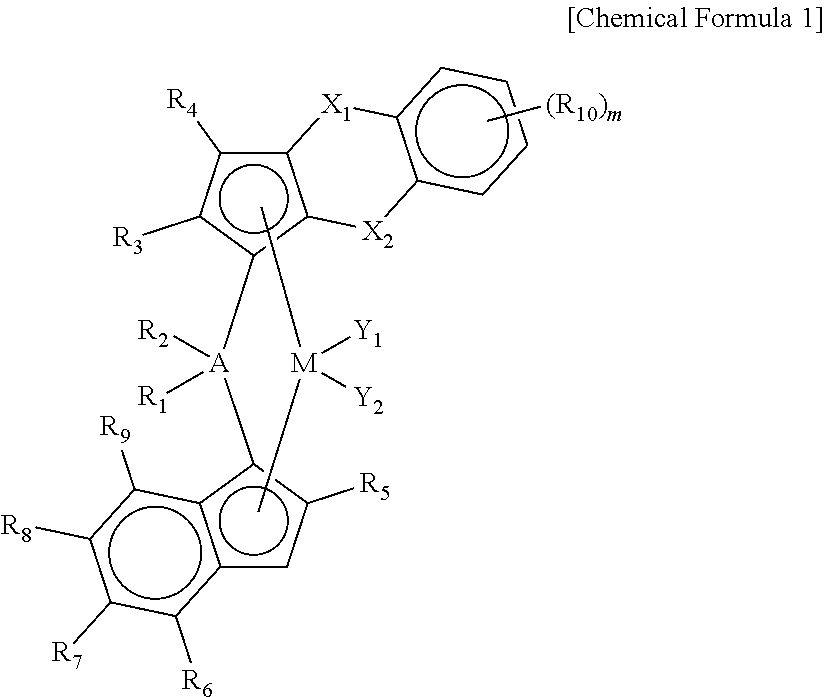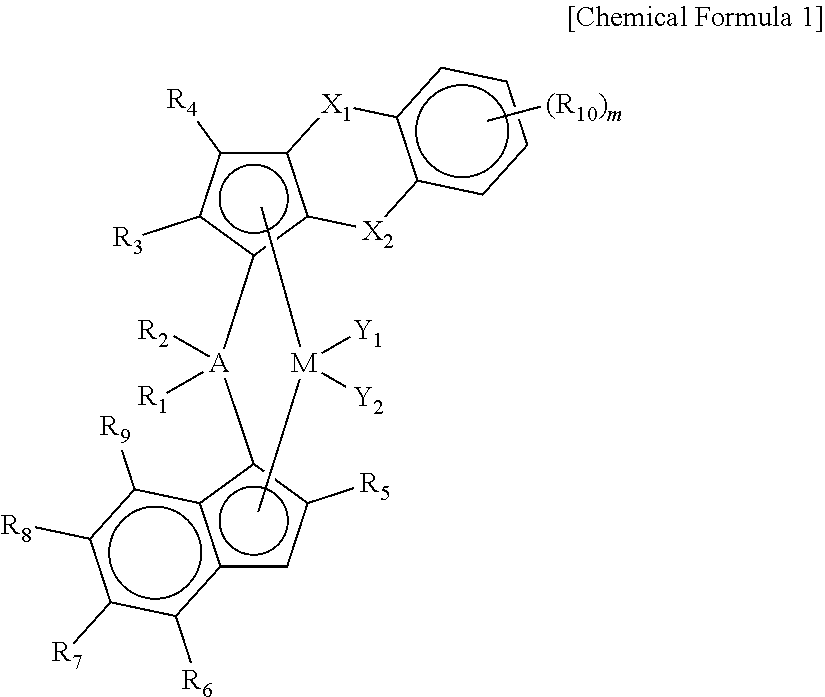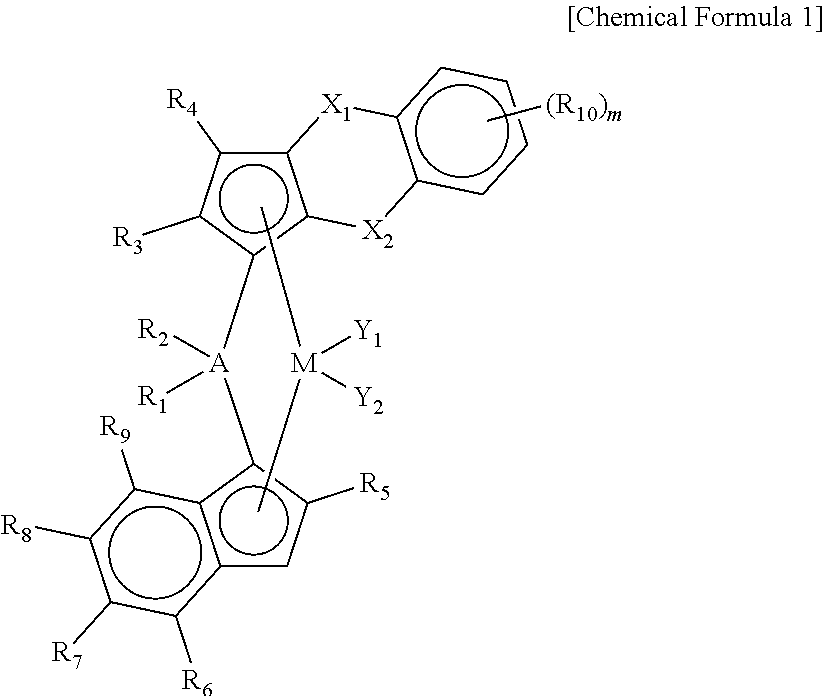Novel Transition Metal Compound and Method of Preparing Polypropylene Using the Same
- Summary
- Abstract
- Description
- Claims
- Application Information
AI Technical Summary
Benefits of technology
Problems solved by technology
Method used
Image
Examples
synthesis example 1
Preparation of ligand compound (1,2-dimethyl-3H-benzo[d]cyclopenta[b]thiophen-3-yl)dimethyl(2-methyl-4-(naphthalen-1-yl)-1H-inden-1-yl)silane
[0137]1 equivalent of 1,2-dimethyl-3H-benzo[d]cyclopenta[b]thiophene was dissolved in tetrahydrofuran (THF) (0.7 M) in a reactor, and n-BuLi (1.05 eq) was slowly added dropwise thereto at −25° C., followed by stirring at room temperature for 3 hours. Thereafter, dichlorodimethylsilane (1.05 eq) was added at −10° C., and stirred at room temperature for 24 hours to prepare a mono-Si solution.
[0138]Separately, 1 equivalent of 1-(2-methyl-1H-inden-4-yl)naphthalene was dissolved in a mixed solvent of toluene and THF (a mixing volume ratio=5:1, 0.7 M) in another reactor, and n-BuLi (1.05 eq) was slowly added dropwise thereto at −25° C., followed by stirring at room temperature for 3 hours. Thereafter, CuCN (2 mol %) was added, and stirred for 30 minutes, and then the mono-Si solution prepared previously was added in the same equivalent weight. Therea...
synthesis example 2
[0144]A transition metal compound (1 b) having the structure presented in the following Table 1 was prepared in the same manner as in Synthesis Example 1, except that 2-methyl-4-phenyl-1H-indene was used, instead of 1-(2-methyl-1H-inden-4-yl)naphthalene, as a reactant in Synthesis Example 1.
[0145]1H-NMR (CDCl3, 500 MHz)
[0146]0.21 (6H, s), 1.79 (6H, s), 2.12 (3H, s), 6.36 (1H, s), 7.41-7.51 (9H, m), 7.93 (1H, d), 8.05 (1H, d), 8.29 (1H, d)
synthesis example 3
[0147]A transition metal compound (1c) having the structure presented in the following Table 1 was prepared in the same manner as in Synthesis Example 1, except that 4-(4-tert-butylphenyl)-2-methyl-1H-indene was used, instead of 1-(2-methyl-1H-inden-4-yl)naphthalene, as a reactant in Synthesis Example 1.
[0148]1H-NMR (CDCl3, 500 MHz)
[0149]0.66 (4H, m), 0.94 (6H, t), 1.33 (9H, s), 1.79 (6H, s), 2.12 (3H, s), 6.36 (1H, s), 7.30-7.49 (8H, m), 7.93 (1H, d), 8.05 (1H, d), 8.29 (1H, d)
PUM
| Property | Measurement | Unit |
|---|---|---|
| Fraction | aaaaa | aaaaa |
| Fraction | aaaaa | aaaaa |
| Molar mass | aaaaa | aaaaa |
Abstract
Description
Claims
Application Information
 Login to View More
Login to View More - R&D
- Intellectual Property
- Life Sciences
- Materials
- Tech Scout
- Unparalleled Data Quality
- Higher Quality Content
- 60% Fewer Hallucinations
Browse by: Latest US Patents, China's latest patents, Technical Efficacy Thesaurus, Application Domain, Technology Topic, Popular Technical Reports.
© 2025 PatSnap. All rights reserved.Legal|Privacy policy|Modern Slavery Act Transparency Statement|Sitemap|About US| Contact US: help@patsnap.com



